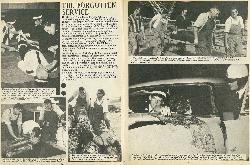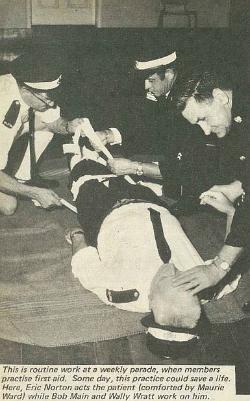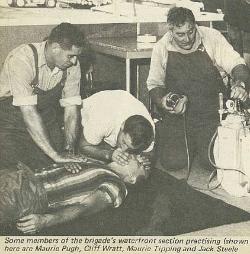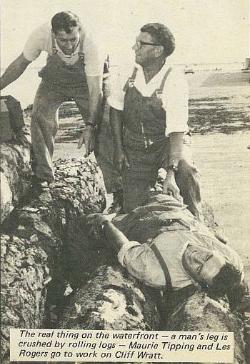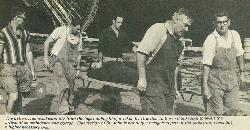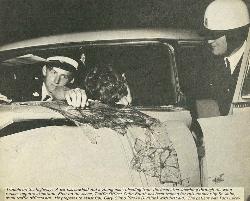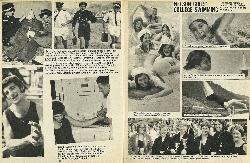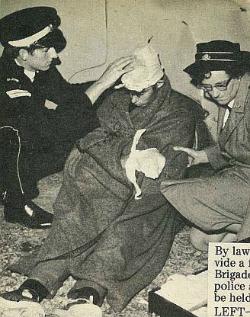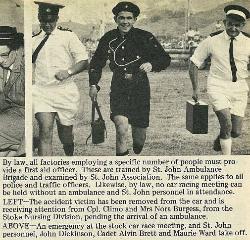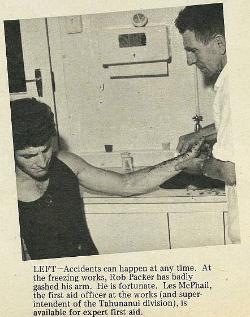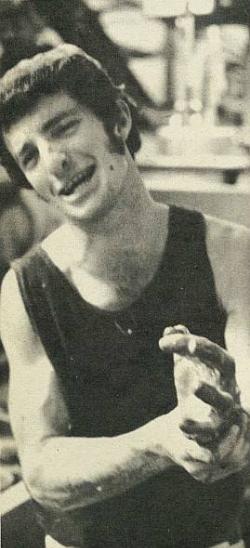38
The Forgotten Service
The St. John Ambulance Brigade. What does this organisation represent to you? To the vast majority of people, the brigade is associated with an ambulance service and the attendance of its members at sporting fixtures in case they are required for first aid. This is, however, but a small section of the work undertaken by an organisation of unpaid, volunteer men and women who have but one aim - to provide a humanitarian service to all sections of the community.
Its sphere of influence, however, is much greater than most people realise. It reaches into the factories, Government departments such as the Ministry of Transport, and Police and into industry. Anywhere, in fact, where first aid instruction is necessary and obligatory.
For all the great work the brigade does, we are certain that their service is largely unappreciated. They have become something of a forgotten service - a service which has for too long now been taken for granted.
The brigade is desperately short of members and it needs your Active support. Not money, not praise, but an increased membership. In Short, St. John Needs You!
To publicise the work of the brigade, we print here the first section of a two-part story on the brigade's work. We thank all who co-operated so readily with us to produce it.
This is routine work at a weekly parade, when members practise first aid. Some day, this practice could save a life. Here, Eric Norton acts the patient (comforted by Maurie Ward) while Bob Main and Wally Wratt work on him.
Some members of the brigade's waterfront section practising (shown here are Maurie Pugh, Cliff Wratt, Maurie Tipping and Jack Steele
The real thing on the waterfront - a man's leg is crushed by rolling logs - Maurie Tipping and Les Rogers go to work on Cliff Wratt.
39
The patient, removed carefully from the logs holding him, is taken by stretcher to the first aid room to await the arrival of an ambulance and doctor. This section of St. John is not only a recognised part of the waterfront scene but a highly necessary one.
Trouble on the highway. A car has crashed and a young man, bleeding from the head after smashing through the windscreen, requires attention. First on the scene, Traffic Officer Colin Booth has been trained for this moment by St. John, as all traffic officers are. He prepares to assist Cpl. Gary Climo (Stoke Division) with first aid. The patient was Tom Lacey.
40
By law, all factories employing a specific number of pepole must provide a first aid officer. These are trained by St. John Ambulance Brigade and examined by St. John Association. The same applies to all police and traffic officers. Likewise, by law, no car racing meeting can be held without an ambulance and St. John personnel in attendance.
The accident victim has been removed from the car and is receiving attention from Cpl. Climo and Mrs Nora Burgess, from the Stoke Nursing Division, pending the arrival of an ambulance.
An emergency at the stock car race meeting, and St. John personnel, John Dickinson, Gadet Alvin Brett and Maurie Ward take off.
Accidents can happen at any time. At the freezing works, Rob Packer has badly gashed his arm. He is fortunate. Les McPhail, the first aid officer at the works (and superintendent of the Tahunanui division), is available for expert first aid.


